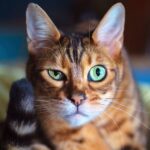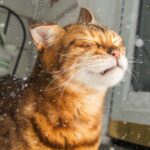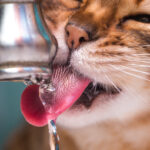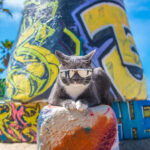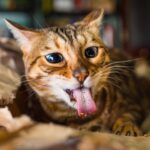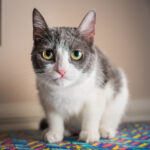INTERVIEW WITH CAT PHOTOGRAPHER, ANDREW MARTTILA
It’s no surprise that cat pictures still reign supreme on the internet. Just take a quick look on Instagram and the hashtag “#cats” and you’ll find over 28 million cat photos. And that’s just one hashtag.
Andrew Marttila, also known by his social media handles as “I am The Great Went,” is a cat photographer, particularly famous in the cat world. His images are breathtaking and he has the uncanny ability to capture his feline subject’s purrsonalities purrfectly.
We interviewed Andrew to find out how he does it and any tips he might have for the amateur photographer…which includes those of us who are always at the ready, snapping pictures of our cats at their cutest moments… and many times unsatisfied with the result.
The Interview
TCT: Tell us about your background in photography. Did you always know this was your calling?
Andrew: I guess I began taking photos when I was a kid. I started out like most people using throwaway cheapish cameras and eventually used some point and shoot cameras in my teens. I never took photography seriously. I was usually documenting teenage mischief more than anything else. Then I stopped taking pictures for a good period of time.
Around 4 1/2 years ago, I picked up photography again when I started taking photos of cats. I borrowed my roommate’s Pentax D-SLR camera to take photos of our new kittens. My roommate had gotten a Siamese the same week I got my cat, a Bengal. I’ve always loved taking photos, but began to genuinely love it when I pointed the lens at animals.
“I’ve always loved taking photos, but began to genuinely love it when I pointed the lens at animals.”
- Andrew’s cat Grendel with intense Cat Face
- Close up of cat tongue licking face
- Andrew’s cat Grendel shaking off snow in the Winter
- Up close, cat tongue drinking from a faucet
- Sunglass Cat wears special sunglasses for an eye disorder
- Burma Adventure Cat
- Husker the cat with a fierce look
- Andrew’s Bengal cat, Haroun enjoying catnip
- Grendel enjoying catnip
- @ImogentheKitten looking grumpy
- Una the Scottish Fold looking innocent
- Andrew’s cat, Haroun in a playful mood.
TCT: Did you have any professional training in photography?
Andrew: No. Aside from watching a few basic tutorials on YouTube explaining the various camera settings, I’ve had no formal training. And I only possess a fairly loose intellectual understanding of these things. Everything I’ve learned has been a result of trial and error, of which I’m a huge advocate. I think trying is imperative to formulating one’s own personal style.
“I think trial and error is imperative to formulating one’s own personal style.”
TCT: What’s your favorite equipment when photographing animals?
Andrew: Catnip and crinkle toys, of course! Oh, you mean camera equipment?
TCT: LOL. Of course!
Andrew: I currently use a Nikon D810. My lens of choice is a 1.4 35mm due to the amount of light it’s able to collect. I prefer natural light over flashes whenever possible, so it helps a lot in that aspect. I have a Nikon speedlight
for extremely dimly lit environments or if I’m trying to catch a freeze frame of a quickly moving animal/object.
TCT: What are some of your favorite or memorable engagements?
Andrew: I absolutely love going into homes of those who have followed my photography and are so stoked to have shots of their animals taken by me. I’m infinitely flattered every time I’m hired. It’s incredibly satisfying to be able to provide such a unique service to people who adore their animals.
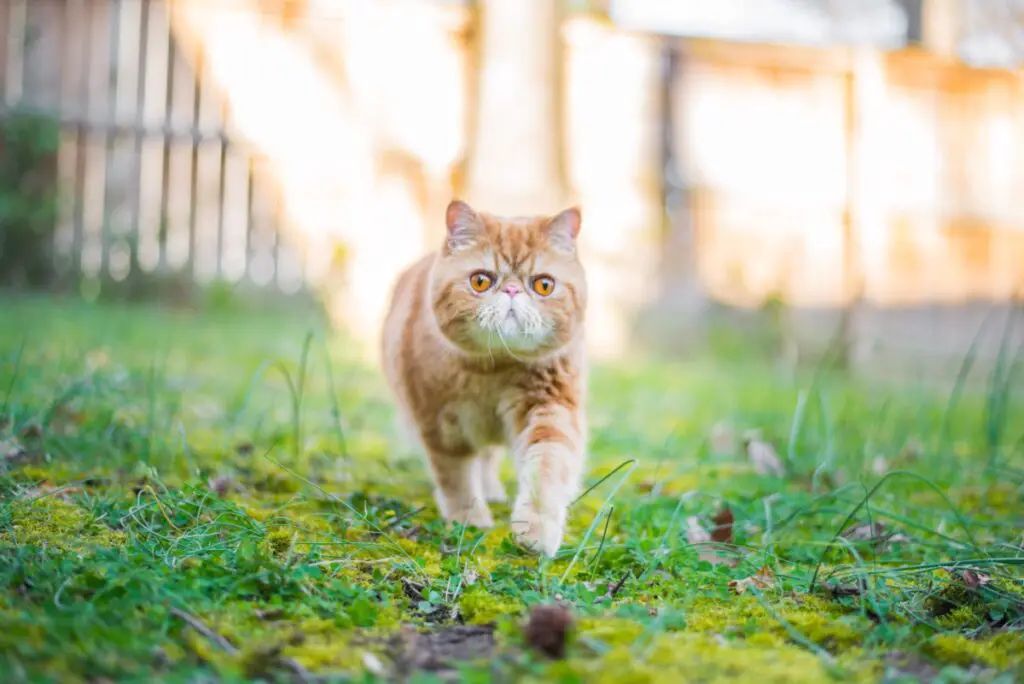
I’ve never turned down an assignment, aside from the occasional request from across the country or elsewhere. I may just have to do a world tour at some point.
Two assignments come to mind immediately as far as my favorites go, both of which were surprise anniversary gifts purchased by the husband for the wife. One lady opened the door to find me there, completely unaware that her guy had hired me. I think she said, “Hey, I know you…” before it registered.
“I’m infinitely flattered every time I’m hired.”
The other was a 6-hour drive to Virginia to surprise the mom of a pair of squishface ginger cats, Seamus and Angus. She had asked me to come photograph them. Her husband wanted to surprise her, so he told me to tell her that I was busy and couldn’t do it anytime in the near future. Needless to say, she was elated when I showed up at their place. They’ve since become really good friends.
TCT: I love Seamus & Angus. I follow them on Instagram – they are too cute.
TCT: The internet is full of people who love to photograph their cats. What tips do you have for the amateur photographer, many who are using smartphones to capture their kitties?
Andrew: Before I got my first “real” camera, I was using my iphone to shoot. This was a number of years ago and the technology in smartphones has come a long way. I think one of the most important factors when it comes to any kind of photography is having an understanding of your light.
TCT: What’s the best lighting to use?
Andrew: An ideal setting would be when it’s daylight and the subject is bathed in natural light. If it’s night and you have traditional lightbulbs, they’ll typically produce a “warmer” photo, meaning that the photo will have a yellowish tint. This is fixed pretty easily in any smart phone app by tweaking the white-balance. Flashes on the phone can be tricky/difficult. I’d recommend not using a flash unless you absolutely have to, or you know how to bounce the light off of another surface. Using the phone’s flash will blast the bright light in your cat’s eyes. Not only will there be a reflective illuminating effect in their eyes (laser eyes), but it often washes out the photo if it’s too strong.
TCT: What about scenery?

Flaps the cat with tongue out
Andrew: Most of the time when I photograph animals, I don’t set up the scene. Instead I allow the animals to be themselves and follow them around. This definitely requires a modicum of patience, but the results of a comfortable, confident animal speaks for itself. Whenever I attempt to achieve something very specific, the animal seems to be keenly aware and thus avoids my plan completely. I think this is one of the keys to capturing your animal’s unique personality. Just let them do their thing.
“Just let them do their thing.”
TCT: Any other tricks?
Andrew: Photographing cats presents a unique challenge from many other animals. More often than not, they don’t follow commands and frankly don’t care about what you’re up to. I do a fair bit of bribery with catnip and treats when I meet a new cat to let them know I’m on their side. After that, it’s just a matter of time before they acclimate to my presence.
I also try to achieve eye contact with my photos. Typically I’ll take some kind of toy that makes noise, and slide it on top of the camera lens so that it appears as though they’re looking directly at the viewer. Additionally, don’t be afraid to get down on the ground to their level. Perspective is an integral part of what makes a photo stand out. Try a lot of different things and whatever works and looks good to you, perfect it.
TCT: What kind of camera would you recommend for a beginner?
Andrew: Honestly, I’m not super up-to-date with what’s out there. I’ve seen impressive results from point-and-shoot cameras, so I would never write off a point-and-shoot as a contender for a good starter camera. Sony has a number of moderately priced cameras out there. Users of the well-known brands like Canon and Nikon are very divided, but I don’t hold much stock in the arguments. You can squeeze a lot of performance and value out of relatively cheap cameras if you learn how to use the equipment well.
TCT: Can you share some of your favorite cat photos?
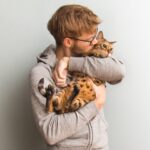
Andrew with his Bengal cat Haroun
About Andrew Marttila, aka The Great Went
Andrew Marttila is 30 years old and lives in Philadelphia, PA. He grew up extremely allergic to all kinds of animals and didn’t overcome his legitimately life-threatening allergy until his early 20’s. He still carries an inhaler with him wherever he goes, but his tolerance has been built to the point that he rarely needs it when encountering animals. Andrew is also seriously smart. He has a degree in neuroscience, that in his words “is hilariously underused, but I try to stay current with various journals and articles in case I decide to go back to school in the future.” When he’s not traveling for work or pleasure, he spends a lot of time at home snuggling and taking photos of his own cats, Haroun and Grendel. Follow The Great Went on Instagram at @iamthegreatwent

